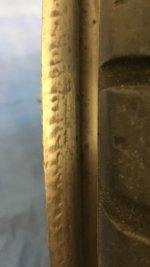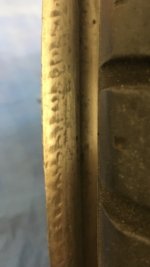Can anyone identify what could have cause this to the edge of Alloy wheels?


Is it a manufacturing fault or have wheels been damaged previously and poorly prepped prior to painting.
The inner flat of the bead looks to be ok and so does the inner sidewall of the bead, although the scuff/roughness does kinda curve down onto the inner bead sidewall at the top.
Initially prior to photos, the scuffs had been painted, although I’ve flatted the inner sidewall of the bead, which has removed some paint from the damaged edges.
Also, would such a condition of the edges of alloy wheels cause the tyre bead no to seal sufficiently ?
Is it a manufacturing fault or have wheels been damaged previously and poorly prepped prior to painting.
The inner flat of the bead looks to be ok and so does the inner sidewall of the bead, although the scuff/roughness does kinda curve down onto the inner bead sidewall at the top.
Initially prior to photos, the scuffs had been painted, although I’ve flatted the inner sidewall of the bead, which has removed some paint from the damaged edges.
Also, would such a condition of the edges of alloy wheels cause the tyre bead no to seal sufficiently ?


